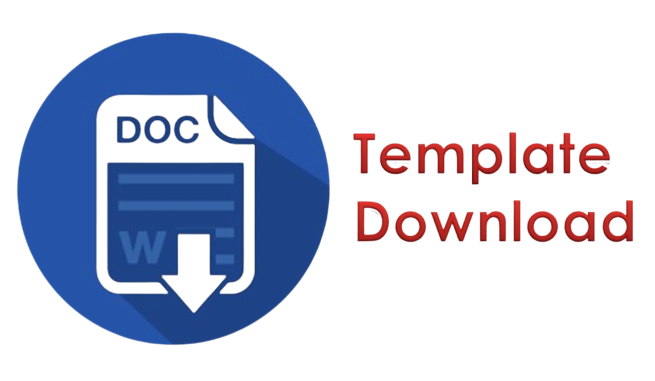The Cash Budget as Internal Control in Regional Cash Financial Management
DOI:
https://doi.org/10.58777/tpf.v1i1.166Abstract
The case study was conducted at the Pandeglang Regency Government, where an urgent need arose when central government transfer funds experienced changes in distribution. The research aims to explain the function of the cash budget in the public sector to achieve efficiency and effectiveness in regional cash management, especially in APBD planning and decision-making regarding the availability of regional government finances. The research method used is qualitative and comparative, namely analyzing certain situations, cases, or groups. The financial management situation of regional cash was analyzed by comparing the before and after implementation of the cash budget as internal control in cash management in Pandeglang Regency. The research results show that the role of the cash budget as an internal control can improve activity planning, cash administration, and activity reporting. The cash budget has also been proven to increase the efficiency and effectiveness of regional cash management, as can be seen from the significant reduction in excess financing. Implementing the cash budget allows the Pandeglang Regency Government to calculate minimum cash and invest the funds to obtain deposits, optimizing the use of funds.
References
Aray, H., & Pedauga, L. (2022). The relationship between decentralization and economic growth across regimes. The Annals of Regional Science. https://doi.org/10.1007/s00168-022-01187-x
Brewer, M. B. (2003). Intergroup Relations (Second). Open University Press.
Gamkrelidze, D., & Japaridze, D. (2020). Cash Management-a Critical Part of Public Finance Management and its Implications in Light of Covid-19 Pandemic. ECOFORUM Journal, 9(3).
Halim, A., & Kusufi, M. S. (2012). Akuntansi Sektor Publik: Dari Anggaran Hingga Laporan Keuangan, Dari Pemerintah Hingga Tempat Ibadah. Salemba Empat.
Huda, A., & Sholihat, N. (2023). Strategi Realokasi Anggaran sebagai Referensi Struktur Anggaran Daerah yang Efisien. Indonesian Treasury Review: Jurnal Perbendaharaan, Keuangan Negara Dan Kebijakan Publik, 8(3), 205-217. https://doi.org/10.33105/itrev.v8i3.597
Lovita, E. (2022). Sistem Pengendalian Internal Dan Nilai/ Budaya Organisasi. In Riset Dalam Perspektif Budaya (pp. 1–29). Peneleh.
Lovita, E., & Prabantoro, G. (2019). Revealing Internal Control Practices in SME Capital Maintenance. 73, 6–9. https://doi.org/10.2991/aicar-18.2019.2
Lovita, E., Sudarma, M., Baridwan, Z., & Roekhudin, R. (2020). Ethnomethodology Study: Employee Loyalty as a Strategy for Building Internal Control in Retail Business. 127(Aicar 2019), 115–118. https://doi.org/10.2991/aebmr.k.200309.026
Mahsun, M. (2013). Akuntansi Sektor Publik (3rd editio). BPFE Yogyakarta.
Moleong, L. J. (2018). Metodologi Penelitian Kualitatif. PT Remaja Rosdakarya.
Peraturan Kementerian Dalam Negeri Tahun 2020 tentang Pedoman Teknis Pengelolaan Keuangan Daerah
Peraturan Pemerintah Republik Indonesia No.12 Tahun 2019 tentang Pengelolan Keuangan Daerah
Peraturan Pemerintah Republik Indonesia Nomor 60 Tahun 2008 tentang Sistem Pengendalian Intern Pemerintah.
Pitaloka, Herninda., Widayanti, Heni., Salsa N.S. Anava., Mutohar., Kabib, Nur. (2020). Penerapan Sistem Pengendalian Internal Pemerintah (SPIP) Dalam Perspektif ‘’COSO’’ Di Desa Kalikurmo Kecamatan Bringin Kabupaten Semarang. Jurnal Ekonomi, Sosial & Humaniora, 1(08), 1-11.
Putra, G. A. P., & Shauki, E. R. (2022). Motivasi dan Kendala Percepatan Penyaluran Kas Daerah. Indonesian Treasury Review Jurnal Perbendaharaan Keuangan Negara Dan Kebijakan Publik, 7(2), 175–191. https://doi.org/10.33105/itrev.v7i2.488
Suparman, N. (2021). Dampak Pandemi Covid-19 terhadap Pengelolaan Keuangan Negara. Indonesian Treasury Review: Jurnal Perbendaharaan, Keuangan Negara Dan Kebijakan Publik, 6(1), 31–42. https://doi.org/10.33105/itrev.v6i1.261
Windhani, K. (2019). Kebijakan Alokasi Anggaran Pemerintah Daerah untuk Kesejahteraan Masyarakat: Analisis Laporan Keuangan Pemerintah Daerah Kabupaten/Kota di Jawa Tengah 242-258. Prosiding, 242–258.
Cifuentes-Faura, J., & Simionescu, M. (2023). Analyzing the Importance of the Determinants of Public Debt and Its Policy Implications: A Survey of Literature. Public Finance Review. https://doi.org/10.1177/10911421231215019
Nakatani, R. (2023). Revenue Decentralization and the Probability of a Fiscal Crisis: Is There a Tipping Point for Adverse Effects? Public Finance Review. https://doi.org/10.1177/10911421231217388
Nakatani, R., Zhang, Q., & Garcia Valdes, I. (2023). Health Expenditure Decentralization and Health Outcomes: The Importance of Governance. Publius: The Journal of Federalism, 54(1), 59–87. https://doi.org/10.1093/publius/pjad031
Santosa, P. W., & Hidayat, A. (2014). Riset Terapan: Teori dan Aplikasi (First Edit). Globalstat Solusi Utama.
Downloads
Published
How to Cite
Issue
Section
Copyright (c) 2023 Erna Lovita, Diana Luthfia, Irvan Noormansyah

This work is licensed under a CC Attribution-ShareAlike 4.0
 Views: 407
|
Views: 407
|
 Downloaded: 308
Downloaded: 308










